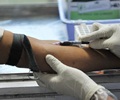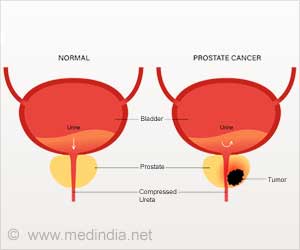Weight-based dosing of taribavirin reduces rates of anemia while increasing sustained virologic response (SVR) in patients with chronic hepatitis C, researchers have found.

Chronic HCV is typically treated with ribavirin (RBV). When used in combination with peginterferon alfa (peg-IFN), RBV significantly enhances on-treatment virologic response and reduces relapse. However, RBV, particularly the combination of interferon and RBV, is associated with hemolytic anemia, a significant toxicity resulting from the accumulation of RBV in red blood cells. Taribavirin (TBV), formerly known as viramidine, is a nucleoside analog and oral pro-drug of RBV that is less able to enter red blood cells, and should therefore be associated with significantly less anemia.
This theory was demonstrated in two previous phase 3 trials. While statistically less anemia was observed in patients treated with TBV compared to RBV, the primary efficacy endpoint of these studies, a non-inferior SVR between the TBV and RBV, was not achieved. Detailed subgroup analyses of the data suggest fixed dosing as opposed to weight-based dosing, and the selection of an inadequate dose, are to blame. The present multi-center study explored several higher weight-based doses of TBV to determine a dosage regimen that was able to deliver comparable responses to RBV with fewer incidences of anemia.
A phase 2b randomized, open-label, active-controlled, parallel-group study was conducted in 278 treatment-naïve, genotype 1 patients stratified by body weight and baseline viral load at 51 centers in the United States between March 2007 and October 2008. Patients were randomized 1:1:1:1 to receive TBV (20, 25, or 30 mg/kg/day) or RBV (800 -1400 mg/day) with pegylated interferon alfa-2b for 48 weeks.
The primary efficacy endpoint was early virologic response (EVR) defined as the proportion of patients with at least a 2-log decrease from baseline in serum HCV RNA levels at treatment week 12. Additional efficacy endpoints included SVR, undetectable HCV RNA at treatment weeks 4, 24 and 48, and viral relapse for those who were responders at the end of treatment. A total of 86 (41%) of TBV patients and 25 (36%) of the RBV group completed treatment and follow up. The most commonly cited reasons for premature withdrawal were lack of response (29%) and adverse events (20%).
The present study demonstrated that weight-based dosing of TBV achieved comparable efficacy to RBV as demonstrated by SVR. This was observed in all three TBV weight-based dose treatment groups, which met the study's primary end-point. Patients treated with TBV had less than half the anemia compared to RBV treated patients. These results suggest weight-based dosing of TBV can significantly improve the tolerability of HCV treatment while maintaining efficacy. Specifically, the 25 mg/kg dose offered the optimal balance of efficacy and safety in this patient population.
Advertisement
Lead investigator Dr. Fred Poordad concludes, "These data suggest TBV may be an effective agent to substitute for RBV in the future and could be incorporated in upcoming trials utilizing emerging small molecules for HCV treatment."
Advertisement
Source-Eurekalert














